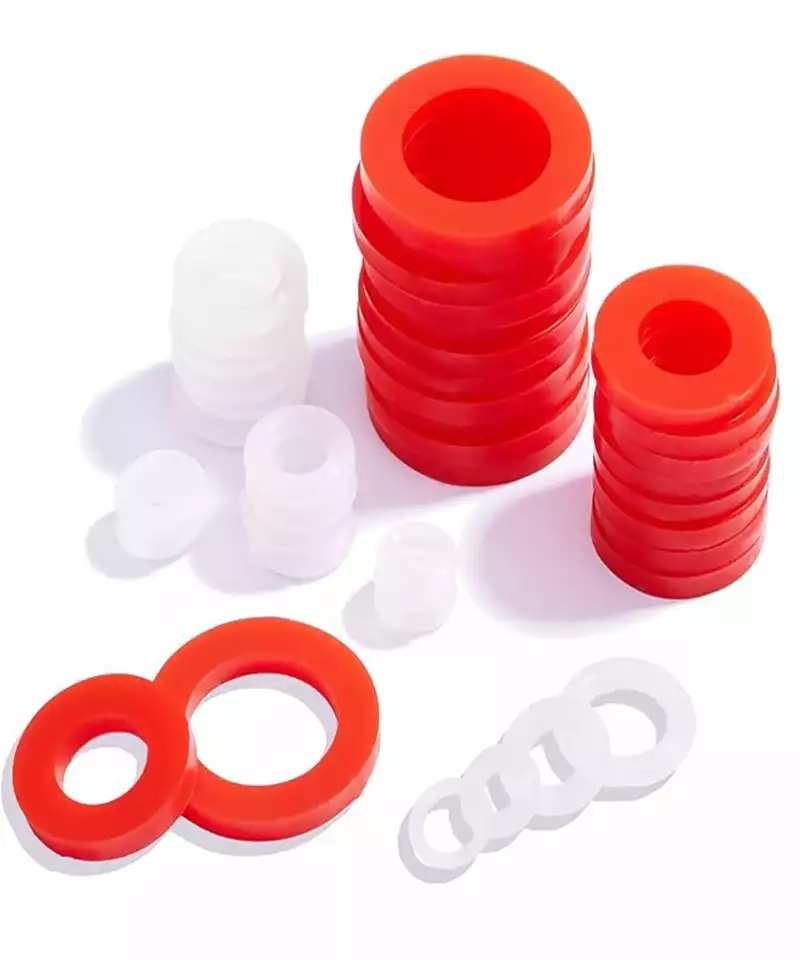
Comprehensive Guide to Silicone Mats: Specifications & Applications
From Kitchen to Workshop: Versatile Protection and Performance
Overview of Silicone Mat Properties
Silicone mats are flexible, non-stick surfaces made from high-quality silicone material, designed for various cooking, baking, and industrial applications[7](@ref). These mats provide a durable and reusable alternative to parchment paper and aluminum foil, offering exceptional heat resistance and non-stick properties[7](@ref). Key characteristics include:
Material Composition
Silicone mats are typically composed of high-quality silicone rubber, a synthetic polymer made from silicon, oxygen, and other elements like carbon and hydrogen[6](@ref). Common types include:
- 100% Pure Silicone: Highly resistant to temperature extremes, chemicals, and UV light[6](@ref).
- Silicone with Fillers: Enhanced with quartz, carbon, or glass fibers to increase tensile strength and thermal conductivity[6](@ref).
- Reinforced Silicone: Contains reinforcing materials like fiberglass or Kevlar for improved tensile strength and tear resistance[6](@ref).
Key Properties
- Heat Resistance: Withstands temperatures from -40°F to 500°F (-40°C to 260°C), suitable for oven, microwave, and freezer use[1,7](@ref).
- Non-Stick Surface: Prevents food and materials from sticking, making cleanup easy[1,4](@ref).
- Durability: Resistant to cracking, tearing, and fading under heavy use[4,10](@ref).
- Flexibility: Can be rolled, folded, or molded to fit various surfaces without damage[10,11](@ref).
- Food Safety: Made from food-grade silicone that is BPA-free, non-toxic, and odorless[1,11](@ref).
Silicone Mat Specifications and Dimensions
Silicone mats come in various sizes, thicknesses, and designs to accommodate different applications:
Common Size Ranges
Standard sizes include 12″ x 18″ (30cm x 45cm), 24″ x 36″ (60cm x 90cm), and 36″ x 72″ (90cm x 180cm)[6](@ref). Custom sizes are available for specialized applications[6](@ref).
Thickness Variations
- 1mm to 2mm: Thin mats for minimal thickness applications (e.g., under appliances)[6](@ref).
- 3mm to 5mm: Versatile thickness for workshops and general industrial use[6](@ref).
- 6mm to 10mm: Thick mats for heavy-duty applications like industrial flooring[6](@ref).
Standard Silicone Mat Specifications
| Type | Common Sizes | Thickness | Temperature Range | Primary Applications |
|---|---|---|---|---|
| Baking Mats | 11.6″ x 16.5″, Half-sheet sizes | 0.75mm | -40°F to 450°F | Baking cookies, pastries, bread[7](@ref) |
| Multi-purpose Mats | 27.5″ x 19.6″, 30″ x 18″ | 0.5mm – 1mm | -40°F to 482°F | Crafting, counter protection, table mats[9,11](@ref) |
| Industrial Mats | 60cm x 91cm, 91cm x 150cm | 9mm | -50°C to 230°C | Workstation protection, anti-fatigue[8](@ref) |
| Specialty Mats | 19.7″ x 15″, 20″ x 30″ | Varies | Up to 400°F | Epoxy resin, crafting, automotive[3,5](@ref) |
Primary Applications of Silicone Mats
1. Kitchen and Baking Applications
Silicone baking mats provide a non-stick surface for baking cookies, pastries, and bread, replacing parchment paper[7](@ref). They promote even heat distribution and prevent sticking[2](@ref). Their heat resistance makes them suitable for oven use up to 500°F[1](@ref).
2. Crafting and DIY Projects
Ideal for various crafts including resin work, painting, jewelry making, and pottery[9,11](@ref). The non-stick surface prevents adhesives, paints, and resins from sticking to work surfaces[4](@ref).
3. Industrial and Workshop Use
Used as anti-fatigue mats, surface protection in workshops, and for preventing slips[8](@ref). They protect surfaces from scratches, spills, and heat damage[4,10](@ref).
4. Specialized Applications
Includes use as desk mats for electronics, pet feeding mats, table protectors, and even in automotive applications for heat shielding[3,11](@ref).
How to Choose the Right Silicone Mat
1. Determine Your Primary Use
Identify whether you need the mat primarily for baking, crafting, industrial use, or general protection[12](@ref). This will guide your selection of size, thickness, and material type.
2. Consider Size and Thickness Requirements
Choose dimensions that fit your workspace or baking sheets[6](@ref). Thicker mats (3mm-5mm) offer better durability and heat insulation for heavy-duty applications[6](@ref).
3. Evaluate Temperature Resistance
Ensure the mat’s temperature range matches your intended use[1,7](@ref). Most quality silicone mats withstand temperatures from -40°F to 500°F[1](@ref).
4. Assess Surface Texture and Features
Textured surfaces provide better grip for dough and crafts, while smooth surfaces are easier to clean[12](@ref). Some mats include measurement markings or non-slip backing[7](@ref).
5. Verify Material Quality and Certifications
Look for food-grade silicone for kitchen applications[1,11](@ref). Check for BPA-free, non-toxic certifications and ensure the mat is dishwasher safe if easy cleaning is priority[12](@ref).
Selection Guide Table
| Application | Recommended Size | Ideal Thickness | Key Features to Look For |
|---|---|---|---|
| Baking & Pastry | Half-sheet (11.6″ x 16.5″) | 0.75mm-1mm | Non-stick, oven-safe, measurement markings[7](@ref) |
| Crafting & Art Projects | Large (27.5″ x 19.6″) | 1mm-2mm | Chemical resistance, easy cleanup[9](@ref) |
| Counter Protection | Custom to counter size | 2mm-3mm | Heat resistance, non-slip backing[11](@ref) |
| Industrial Workstations | 36″ x 72″ | 6mm-10mm | High durability, anti-fatigue[8](@ref) |
Care and Maintenance of Silicone Mats
Cleaning Instructions
Most silicone mats are dishwasher safe[1](@ref). For hand cleaning, use warm water with mild dish soap and a soft sponge[12](@ref). For stubborn residues, use a baking soda paste or soak in warm soapy water[12](@ref).
Drying and Storage
Dry completely before storing to prevent mold or odor buildup[12](@ref). Store in a cool, dry place away from direct sunlight[7](@ref). Mats can be rolled or folded for compact storage[11](@ref).
Usage Precautions
Avoid using sharp utensils that could damage the mat[7](@ref). Do not expose to direct open flames or broiler settings[12](@ref). Avoid drastic temperature changes to prevent warping[12](@ref).
Longevity and Replacement
With proper care, high-quality silicone mats can last for years[4](@ref). Replace mats that show signs of wear, damage, or loss of non-stick properties[12](@ref).
Conclusion
Silicone mats offer exceptional versatility, durability, and performance across numerous applications from kitchen to workshop. Their heat resistance, non-stick properties, and ease of maintenance make them valuable tools for baking, crafting, and industrial use.
When selecting a silicone mat, consider your specific needs regarding size, thickness, temperature resistance, and intended application. Quality mats made from food-grade silicone provide the best performance and longevity.
With proper care and maintenance, a good silicone mat can serve as a reliable protective surface for years, making it a worthwhile investment for both home and professional use.

